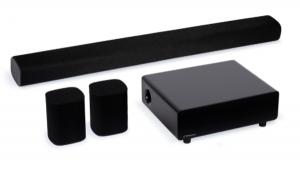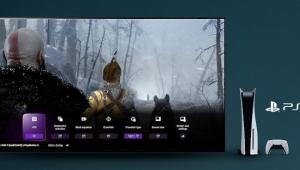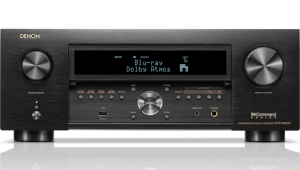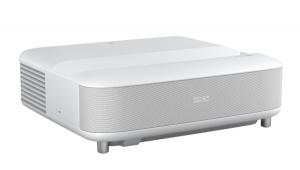News and Gear for Fall 2021 Page 2
Xbox Gets Dolby Vision

Xbox has supported Dolby Atmos surround sound since 2017 but support for Dolby Vision high-dynamic-range (HDR) capability has been missing — until now. Last week, Microsoft added Dolby Vision capability to Xbox Series X and Series S consoles, allowing gamers to enjoy a more vivid visual experience with significantly brighter highlights and deeper blacks when Dolby Vision is enabled and the console is connected to a TV that supports this feature.
More than 100 Dolby Vision-enabled titles are planned for the near future, including Halo Infinite, according to Microsoft. Some have already been released, including Borderlands 3, Call of Duty Black Ops Cold War, Dirt 5, F1 2021, Gears 5, Guardians of the Galaxy, Immortals Fenyx Rising, Metro Exodus, Microsoft Flight Simulator, and Psychonauts 2.
Titles that support Dolby Vision join thousands of games that already support HDR10 or Auto HDR decoding. Both improve picture quality, but to a lesser degree than Dolby Vision, which uses dynamic metadata encoded into each frame to constantly optimize image quality.
In a blog announcing the new feature, senior program manager Katie Slatery wrote: “Dolby Vision deepens your immersion into the experience by enabling you to see an enemy hiding in the shadows or spot hidden clues through expanded contrast and better clarity in both bright and dark scenes.”
For gaming with the best possible dynamic range, Microsoft says gamers need a Dolby Vision-capable TV with settings such as variable refresh rate (VRR) and automatic low-latency mode (ALLM), which enables the display’s lowest latency mode to ensure smooth, lag-free game play.
For more information, visit news.xbox.com.
Denon Adds Alexa and 5.1 Capability to its Speakers

Denon has issued a firmware update that adds Alexa voice and wireless 5.1 surround sound capabilities to its Denon Home series soundbar (model 550) and wireless speakers (models 150, 250, and 350).
With the free upgrade, owners of Denon Home series products will no longer need a separate Alexa-enabled device to access the digital assistant. The update also enables Denon’s wireless speakers to be paired pair with the soundbar for a more immersive surround experience and provides as “DSP boost” to improve the soundbar’s bass performance. For even bolder bass, system builders have the option of pairing Denon’s DSW-1H subwoofer with the soundbar using the HEOS app, which has been redesigned to simplify navigation and control.
Setting up Alexa on Denon Home products is a simple matter using the HEOS app to turn on the built-in microphones and linking the speaker to an Alexa account. When the microphones are activated, an LED in the base of the speaker lights up and listeners can use voice commands to play music, check the weather, control smart home devices, and more.
The update also activates a pair of touch buttons on the top of Denon Home speakers: one for activating the internal microphones, the other for muting them. When the microphones are engaged, voice commands can be used without having to first say, "Alexa;" when they are muted, the touch buttons and LED turn red.
Owners of first-generation (HS1) HEOS products made before 2017 can download and use the new HEOS app but will have to wait until later this year for the firmware update.
For more information, visit support.denon.com.
Zappiti Previews New 4K Media Players
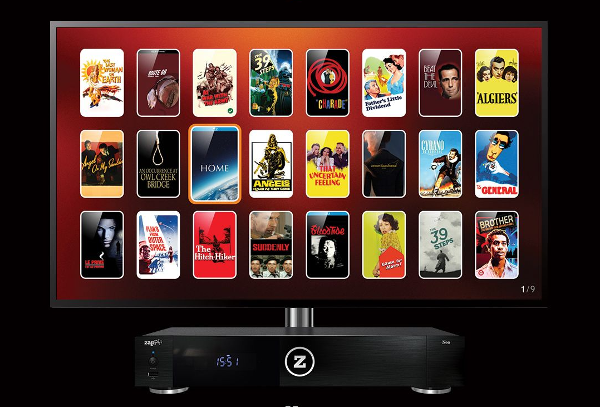
Zappiti, the French company behind the Kaleidescape-like 4K movie system we reviewed in 2019, is previewing three new media players slated for delivery in November. All are powered by the latest Realtek chipset and boast a number of features, including Dolby Vision and HDR10+ high dynamic range (HDR) decoding, Dolby Atmos and DTS:X surround sound, dual HDMI outputs, and a cinematic 2.35:1 viewing mode.
The Neo ($899), Reference ($1,599), and Signature ($2,999) players double as media servers and are designed to stream 4K movies with lossless audio to other Zappiti devices on the same network via the company’s Zappiti Share protocol. The Neo provides up to 20 terabytes (TB) of storage, while the Reference and Signature players are equipped with dual hard drives for storing up to 40 TBs of video and music files and a 32-bit ESS digital to analog converter (DAC). The Reference model has a single toroidal transformer and uses ESS’s ES9038Q2M DAC, while the Signature player has dual R-Core transformers and uses an ESS ES9038 PRO converter.
Zappiti says it has significantly increased processing power over previous generation players and all models include a backlit remote control as well as an improved version of the company’s app, which features a graphical user interface that displays cover art with details about the movie or TV show you’re watching. In addition to playing Ultra HD Blu-ray disc images with menus, the players handle “almost all” recent video file formats — including HEVC with 10-bit color encoding, VP-9, and 3D video — and high-resolution audio in DSD, FLAC, ALAC, and MQA formats.
The company’s Magic Pixel video processing has been upgraded over previous generations to deliver “improved dynamics, accurate colorimetry, increased contrast, solid de-interlacing, and better upscaling (up to 4K resolution).” Additional features include auto frame-rate detection (24/50/60p), HDR to SDR conversion for playback on a 1080p TV or projector, and A/V sync adjustment.
For more information, visit zappiti.com.
- Log in or register to post comments












